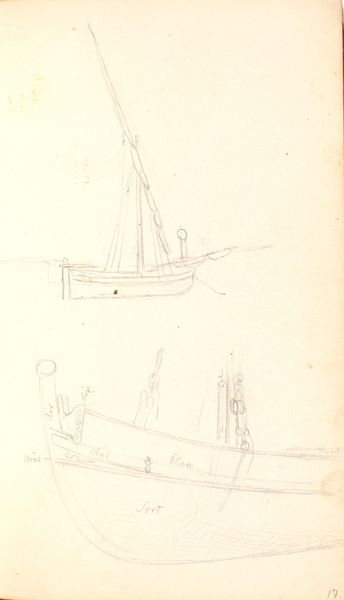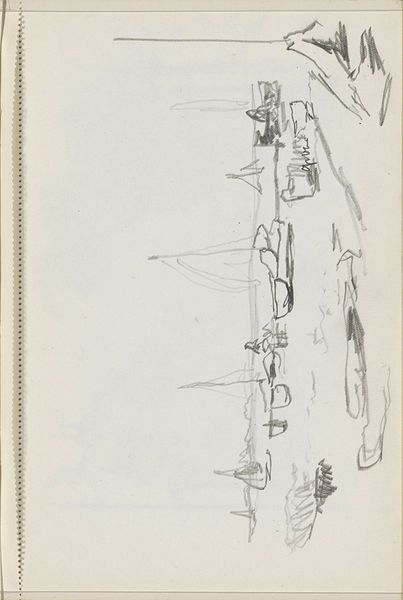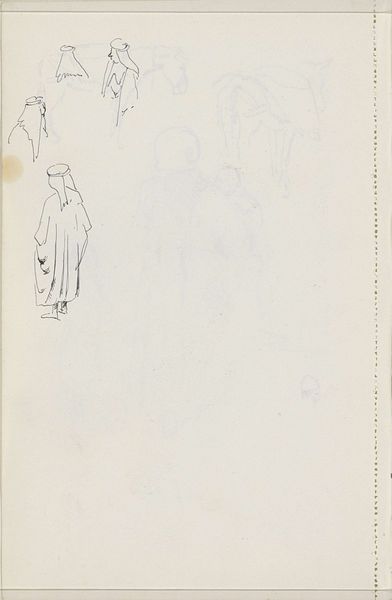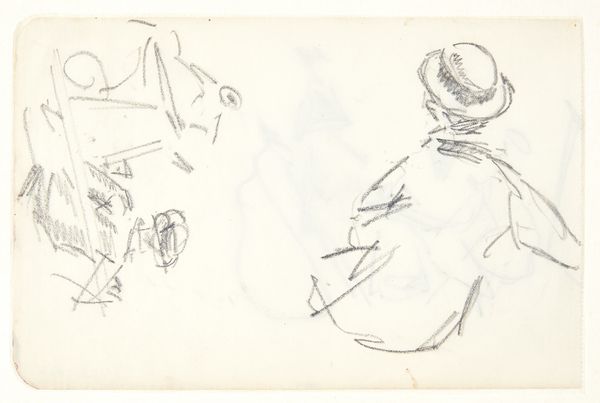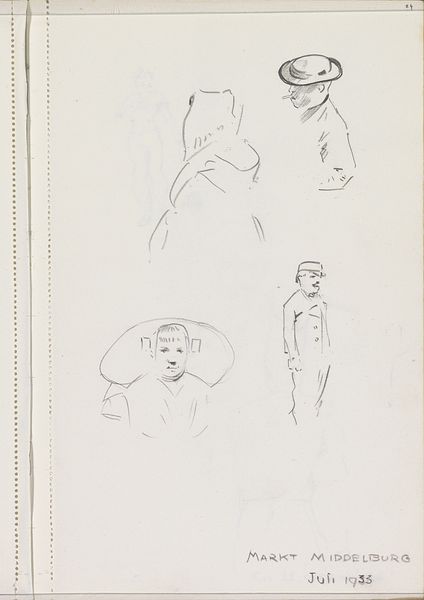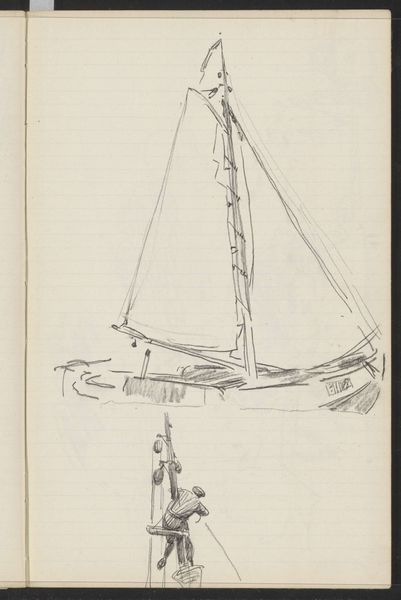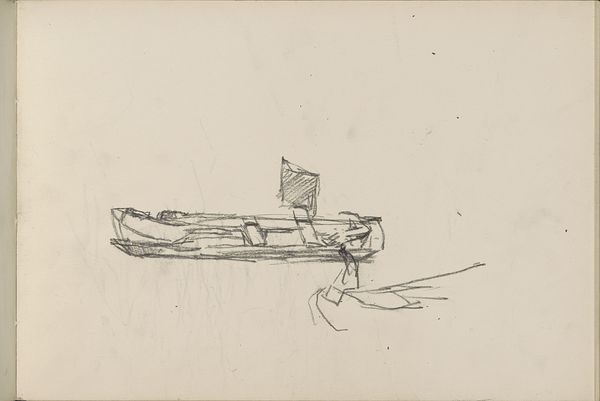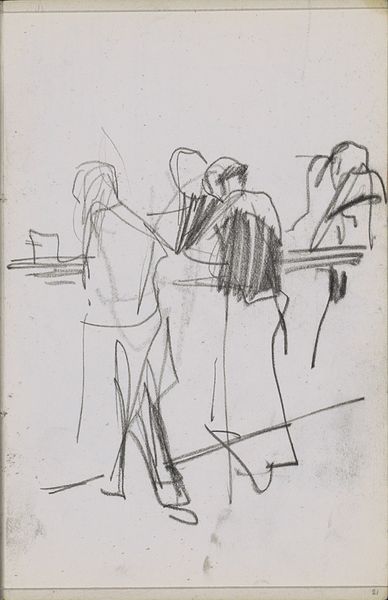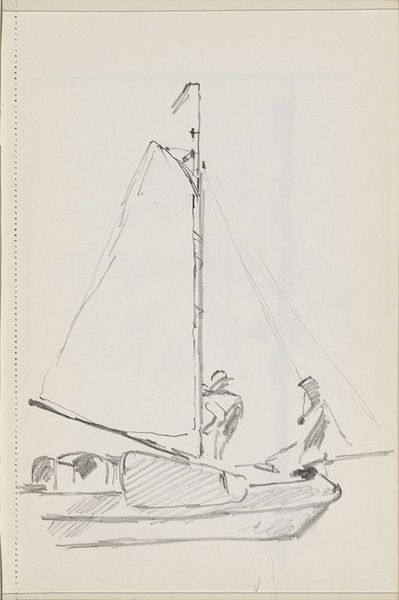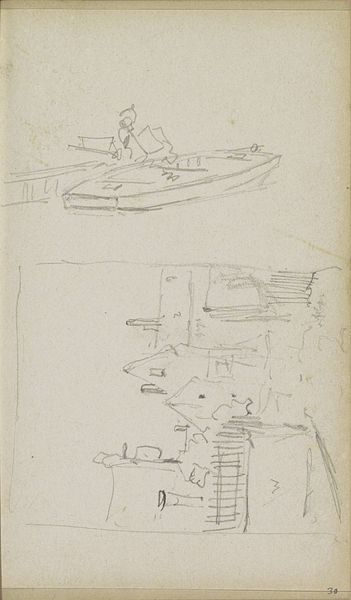
drawing, paper, pencil
#
drawing
#
landscape
#
figuration
#
paper
#
intimism
#
pencil
#
realism
Copyright: Rijks Museum: Open Domain
Curator: This piece immediately strikes me as a work heavy with implication, despite its minimalist appearance. What do you see? Editor: The drawing, entitled "Zittende jongen, een roeiboot en een handdoekenrek in Noordwijk aan Zee," or “Sitting Boy, a Rowboat and a Towel Rack at Noordwijk Beach” by Otto Verhagen from 1935, has an intimate, sketch-like quality. It appears to be done on paper in pencil. I find myself drawn to the figures, especially the suggestion of narrative and the ambiguous gender representation. Curator: Otto Verhagen exhibited regularly in the Netherlands throughout his life and this small sketch gives insight into the Dutch culture of leisure. Verhagen seemed invested in an egalitarian perspective in the public art domain, what could the gender ambiguity you suggest imply? Editor: Well, the boys lack traditional masculine attributes. By presenting them in such a non-conforming manner, is Verhagen suggesting a re-imagining of boyhood? Perhaps it is an early queer reading, one which is deliberately at odds with the ascendant fascism and the social normalisation of specific types of gender performativity evident elsewhere in 1930’s Europe? Curator: That's a powerful connection to draw. Given the time period, such a subtle subversion would be incredibly risky. But I can't help but think of it in its art historical context; this pencil sketch reflects back to the French intimist tradition of Pierre Bonnard and Édouard Vuillard who used similar styles to comment on bourgeois domestic life. Here the subject matter, focusing on a seaside setting and social class is clear. Editor: But Verhagen avoids idealizing it, don't you think? There is no sunshine or joy evident in his sketch, only a document of social stratification in leisure, access to this leisure and life reflected in a lack of dynamism and some figures that aren’t evidently gendered. The reality isn't romantic. It prompts me to ask; Who has access to this beach and the privileges of ease in the midst of the depression? Curator: A question worth considering further, especially concerning Verhagen's perspective as a socially engaged artist during this era. It definitely deepens my understanding of how he positions his art. Editor: Absolutely. Thank you for bringing it to light within its political moment!
Comments
No comments
Be the first to comment and join the conversation on the ultimate creative platform.
